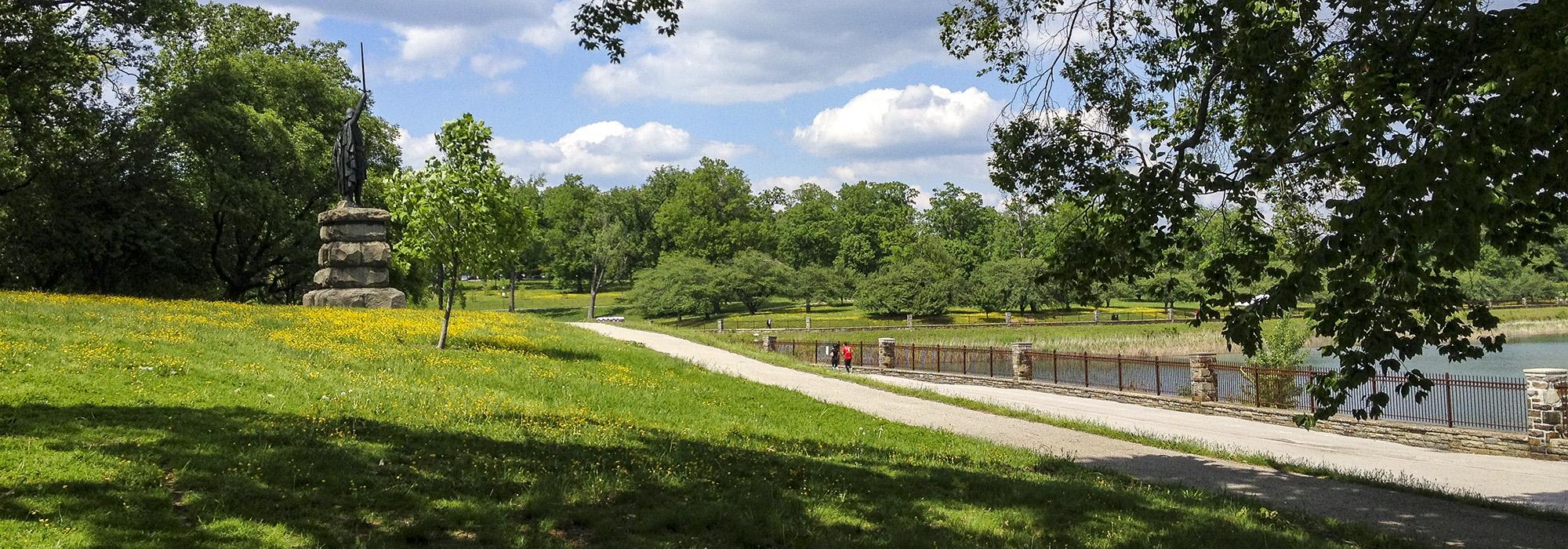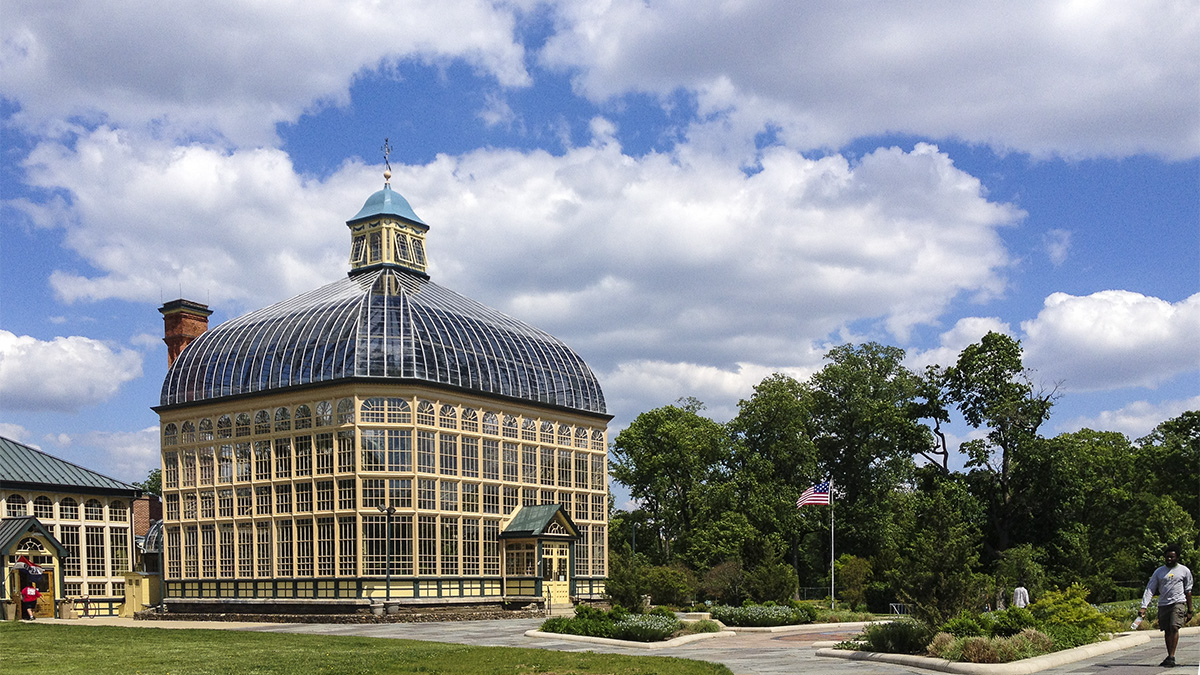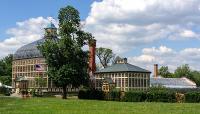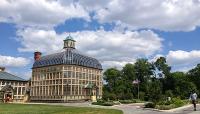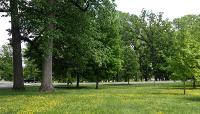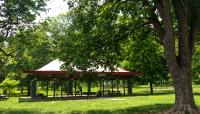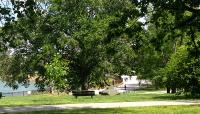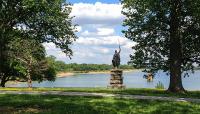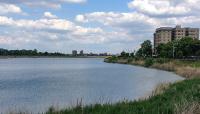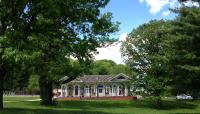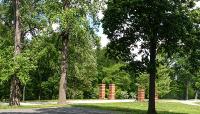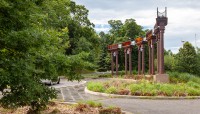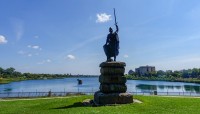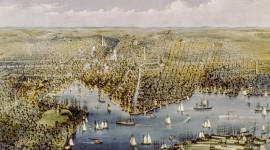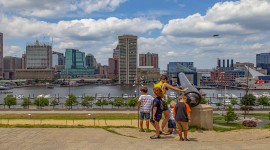Landscape Information
In 1860 the city purchased Lloyd Nicholas Rogers’ estate and surrounding land to create an expansive park. Landscape architect Howard Daniels’ design for it included a winding network of bridle trails, footpaths, and graveled carriage roads that linked a series of hilltop picnic groves, affording a variety of experiences and scenic views across the 745-acre site’s rolling terrain. The third-oldest large U.S. municipal park, Druid Hill Park’s design is heavily influenced by the English landscape tradition, with large clearings and expanses of lawn broken up by groves of trees and dotted with pavilions, with densely planted woodland fringes. The Rogers Mansion, sited on a hilltop, was converted by architect George Frederick into an Italianate pavilion that looks out over a sweeping lawn to the south. Another focal point is the promenade, an axial walk paved with brick in a basket-weave pattern and lined with flowers, benches, and linden trees.
Druid Lake, a 55-acre reservoir, was created in 1863 with the building of a large earthen dam. Ringed by a 1.5-mile-long path that provides views across the lake, it still provides much of the city’s drinking water. The Maryland Zoo was established within the park in 1876 and over time expanded to 185 acres of the park’s core. The Druid Hill Conservatory (now the Howard P. Rawlings Conservatory and Botanic Garden), designed by Frederick, was added in 1888. The 1904 citywide report by Olmsted Brothers called for parkways and boulevards that would link Druid Hill Park to newer parks in the city, including Wyman Park and Clifton Park. Other improvements within the park carried out by Olmsted Brothers include the numerous athletic facilities north of the lake. Druid Hill Park was listed in the National Register of Historic Places in 1973.



